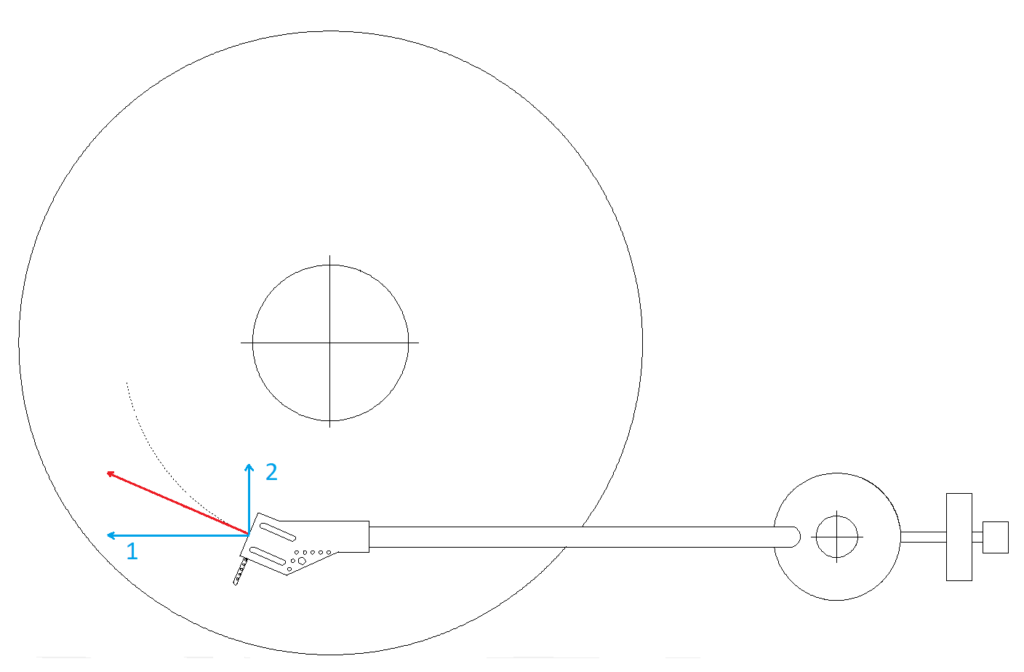Anti-Skate Technical Information
The anti-skate system on Basis tonearms is designed to counteract the sideways facing force generated by the friction between the stylus tip and the record groove. This compensation reduces wear on records and maximizes the tracking ability of the tonearm and cartridge.
The sideways facing force in question points inwards, towards the center of the record and perpendicular to the armtube. But, where does it come from?
Since the record groove is tangent to the cantilever at the stylus position, the force of friction is pulling the stylus directly forward in line with the cantilever. This is illustrated in the picture below, where the red arrow shows the direction of this frictional force, and the faint dotted line shows the record groove currently being tracked.
Notice that the frictional force is not in line with, or parallel to the armtube. However, the force of friction can be resolved, through Vector analysis, to have two perpendicular components:
1. A component along the line running to the tonearm pivot (which causes no motion or side force on stylus).
2. A component along a line inward toward the spindle, perpendicular to the armtube.
These two components are illustrated with the blue lines shown in the image below.

So, if the stylus were not locked into the groove, the arm would move inward. To demonstrate this, disconnect the anti-skate system on your tonearm, and cue the tonearm down on a spinning blank record. You will immediately see the tonearm pivot inwards towards the center of the blank record.
Another way to demonstrate this is to use a light thread to represent the red force vector in the above image. Cue the arm up to prevent the stylus tip from coming into contact with the platter or record. Tape the thread to the centerline of the headshell. Lightly pull the string and align it so it runs along the centerline of the headshell (which is also the centerline of the cantilever). The tonearm will immediately move inward. That’s the effect of the inward component of the force vector, which is marked #2 in the picture.
Now, imagine a stylus locked into the groove. As it pulls the arm forward the arm pushes inward, pushing the stylus against the inside groove.
Remember, this behavior is not due to the stylus generating a force perpendicular to the armtube. The force of friction on the stylus is merely pulling it forward, then the arm reacts by exerting a force sideways on the stylus. To remedy this, we need to exert a force on the tonearm to pull it outward. That force is defined by the following equation:
Anti-skate force = sin(headshell angle) x tracking force x coefficient of friction
If you do not balance the inward force component by an equal and opposite anti-skate force, the stylus will be pressing against the inner wall. To sum it up, an anti-skate force must be applied to equalize the force on both sides of the cartridge, which results in minimizing wear maximizing tracking ability.
Note: The practical demonstration described above was taken from A.J’s notes about anti-skate, which can be accessed here